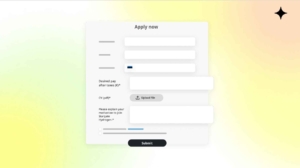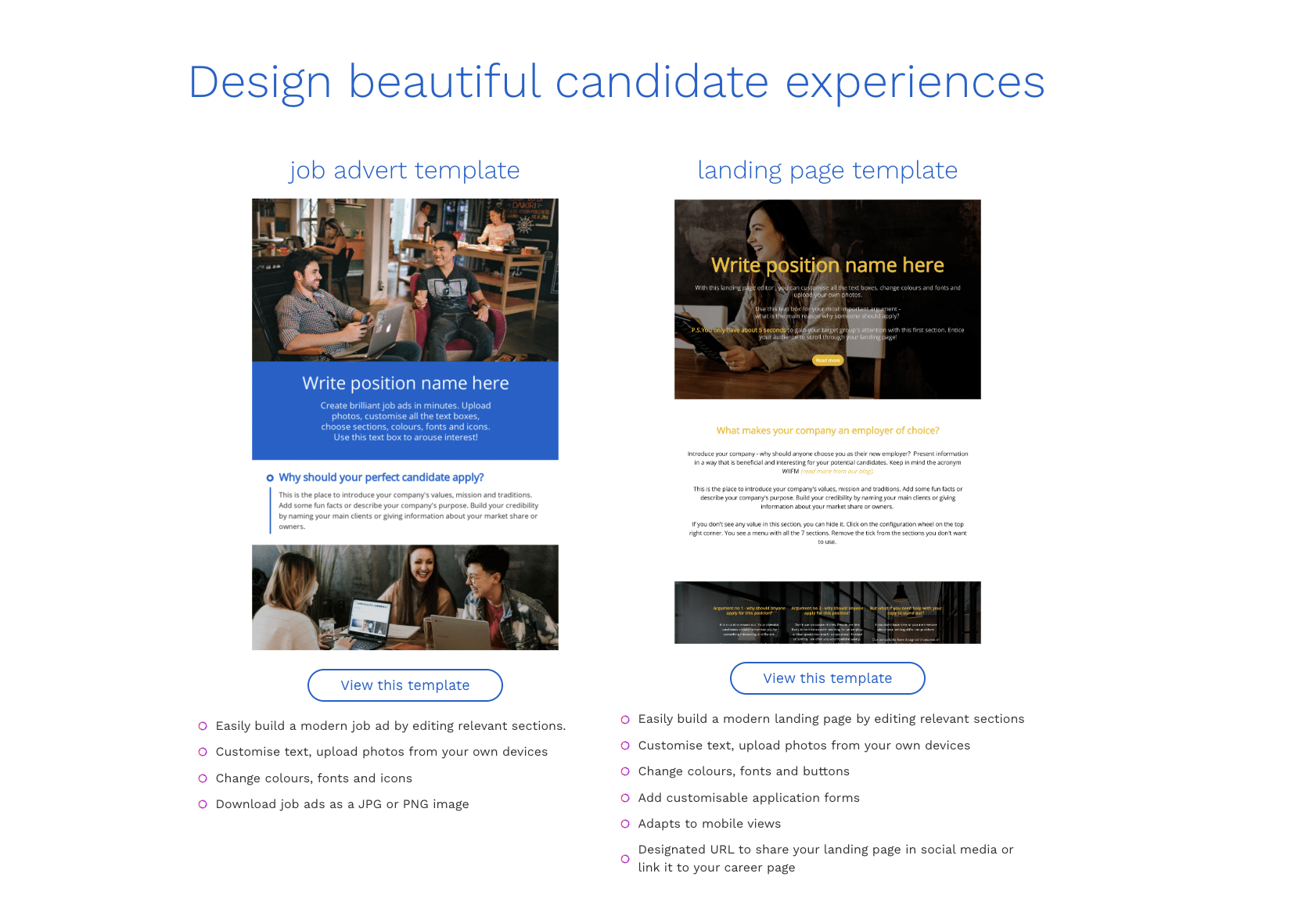Recruitment marketing is a crucial aspect of the recruitment process, as it helps organizations build a strong employer brand and attract the best talent. Having a solid recruitment marketing strategy in place can help you stand out in a crowded job market and attract top candidates.
Even during economic downturns, competition for top talent remains fierce. To succeed, it is essential to understand the channels and tactics to stand out from the rest. If your company is able to continue recruiting even during times when many others are implementing hiring freezes, you have a valuable opportunity to strengthen your employer brand and differentiate yourself from the competition.
In this blog post, we’ll discuss 7 specific tips to help you create a recruitment marketing strategy that will drive results and help you gain good candidates.
What is recruitment marketing and why is it so important?
Recruiters today still face intense competition for top talent, making it more important than ever to distinguish yourself as an employer or agency. One effective way to do this is through recruitment marketing, which involves utilizing marketing strategies to attract and engage potential candidates.
The role and expectations placed on recruiters are evolving, and it is increasingly expected that recruiters understand how to effectively promote job openings and make them more visible to potential candidates. This is where understanding recruitment marketing techniques becomes important.

Main channels for implementing a recruitment marketing strategy:
These will come as no surprise but to make your planning a little bit easier, here is a list of the main channels to consider when promoting your job openings:
Social media: Platforms such as LinkedIn, Twitter, and Facebook can be used to engage with potential candidates and promote job openings. This can be done by promoting page posts or using Facebook and Linkedin advertising tools to increase your job posting’s visibility. Creating beautiful and eye cathcing job ads is a must for this to work.
Career websites: Organizations can optimize their career websites to make it easy for candidates to find job openings, learn about the company culture, and apply for jobs. You are already getting traffic to your site, and maybe your ideal candidate is lurking on your site already. Make sure your page represents your company well and is easy to find on your site. Creating career pages is easier than ever today, as there are many tools available that will allow you to design career pages on your own without having to use a web and graphic designer.
Paid advertising: Organizations can use paid advertising such as Google Adwords, LinkedIn ads, or Facebook ads to increase visibility of job openings and reach a larger audience. You can ask for help from your digital marketing team if you’ve never done it before or get help from a freelancer. Some ATS software providers offer ad buying features within their software so everything can be managed with ease and by yourself.
Employee Referral: Employee referral programs are a great way to tap into the networks of current employees, who can refer friends, family members or colleagues to the open positions. Make it easy for your employees by creating a referral program and sharing the information regarding the position and its requirements with your team.
Events and Conferences: You can attend job fairs, conferences, and other events to connect with potential candidates and promote job openings. Make sure the materials you are handing out align with your company brand and core values. It’s always a good idea to hand out something practical and memorable that will make you stand out and is somehow connected to your area of expertise. So feel free to ditch the usual pens and use creativity and imagination to get people talking.
How to create a recruitment marketing strategy?
Here are 7 essential steps for creating a successful recruitment marketing strategy:
1. Clearly define your target audience.
Clearly define the qualifications, experience, and skills of the candidates you want to attract. This will help you to tailor your recruitment marketing efforts to the right people. Define the personal profile of the candidate you want to attract and think where they might spend time outside of the channels highlighted above.
2. Set some measurable goals.
Clearly define your recruitment marketing goals and create a plan to achieve them. Use metrics to track your progress and make adjustments as needed. How many impressions are you looking to get? How many views on your landing page? How many actual applicants? What is your goal in terms of time to hire? Defining your goals will help you make sure you are actively looking for ways to source the best candidates.
3. Put effort into developing a compelling employer brand.
Your employer brand is what sets you apart from other organisations. Make sure it accurately reflects your organisation’s culture, values and mission and that they are easily found on your career pages and your website overall. Developing a compelling employer brand doesn’t happen overnight, so you have to put effort into it every day. An employer brand is important because it can influence a candidate’s decision to apply for a job, accept a job offer, or stay with the company long-term meaning it also influences employee retention.
4. Utilize social media and digital marketing tools.
Make sure you post your job openings to your social media profiles. Many companies have tens of thousand of followers across multiple platforms that most likely include fans of the service, product or brand which makes influencing them to join your team much easier. Make sure to also use the advertivising options on these platforms to gain additional pairs of eyes on your job advertisements.
5. Create attractive job adverts and landing pages.
Creating an attractive job advertisement can help increase the number of applicants and improve the quality of the candidates you attract. Use compelling images, include a detailed job description, highlight benefits and perks. You are selling the company to the potential employee so presenting yourself in an attractive manner is the key. Luckily creating attractive job ads and landing pages doesn’t require any help from web and graphic designers as there are tools available that make it super easy to set up on your own. See examples for best practices.
 Easy to use tools allow you to create job adverts, landing pages and career pages without needing a web or graphic designer.
Easy to use tools allow you to create job adverts, landing pages and career pages without needing a web or graphic designer.6. Give candidates timely feedback and make them advocates as part of your recruitment marketing strategy.
It is crucial to respond to all candidates in a timely manner. Failing to respond can create a negative perception of your brand and discourage potential candidates from applying in the future. To ensure that no candidate is left without a response, utilize automated tags and triggers in your applicant tracking system to send out emails automatically. Even if a candidate is not selected for the position, a positive experience can lead to potential referrals from their network.
7. When seeking out potential candidates, consider asking for referrals from individuals who may not be actively seeking new employment opportunities.
Candidates usually have a strong network of people in a similar field that they know might be looking for a new position. If you have effectively marketed the position and company, it is unlikely that candidates will hesitate to provide referrals of potential candidates if they have someone in mind. When it becomes clear that a candidate is not interested in leaving their current employer, be sure to inquire about potential referrals during your discussions.
Need help or want to start using an efficient applicant tracking system with all recruitment marketing tools integrated? BOOK A DEMO WITH US.
Teamdash – The all-in-one recruitment software.
Streamline your recruitment process, save up to 70% of your time and hire top talent fast.



